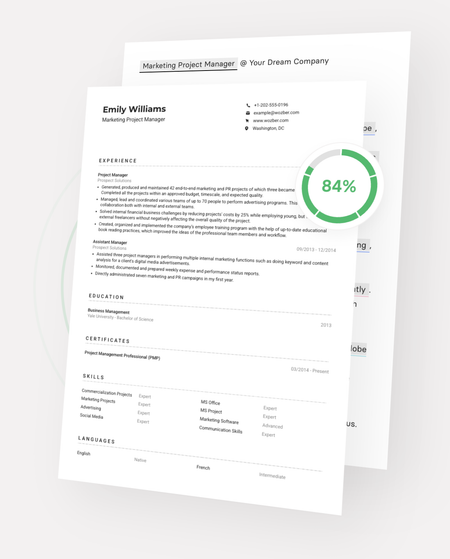
Frontend Engineering: Architectural Patterns
Explore architectural patterns for resilient front-end systems. Learn to use modular design, event-driven architecture, and other techniques for scalable, and fault-tolerant user interfaces. This guide covers best practices for equipping front-end engineers to build robust systems.
About the author: VP of Engineering, Program Manager, Coach, and Founder, specializing in career coaching, behavioural and system design prep. Book time with them here.

In the ever-evolving web development landscape, front-end engineers face the challenge of building complex, scalable, and fault-tolerant systems. This blog post explores architectural patterns like modular design and event-driven architecture that can help create robust front-end applications. We’ll dive into the benefits of these patterns, discuss their implementation, and provide real-world examples to guide you in putting these concepts into practice.
Frontend Engineering:
1. Re-Architecturing Airbnb’s Frontend:
Covers Airbnb’s journey in re-architecting their frontend codebase for better scalability and developer productivity. Explores their adoption of React, code-splitting techniques, performance optimizations, and infrastructure changes to support a growing engineering team.
Uncover profound insights by exploring the full article here.
2. Making Instagram Faster (3-part series):
A three-part series detailing Instagram’s efforts to improve performance and user experience. Covers areas like React optimization, code quality, network/data management, and tooling for measuring/debugging frontend issues at scale.
Dive deeper into these transformative strategies by reading the complete series here.
3. The Best App to Slice Through Front-end Interviews:
Recommends an app/resource considered highly effective for preparing for front-end developer interviews. Likely covers coding challenges, system design questions, behavioral mock interviews, and study guides for acing the interview process.
Access the complete resource and elevate your preparation by clicking here.
4. How to Design Facebook’s News Feed:
Explores the system design for Facebook’s News Feed feature. Covers aspects like the data models, ranking algorithms, machine learning components, scaling the backend infrastructure, and handling real-time updates efficiently.
Gain a deeper understanding of these intricate details by exploring the full article here.
5. How YouTube Improved Video Performance:
Dives into YouTube’s technical solutions for enhancing video streaming performance across devices and networks. Covers areas like adaptive bitrate streaming, CDNs, optimizing video codecs/formats, and frontend/backend architectures.
Discover more about these advanced technologies by reading the full article here.
6. Shopping for Speed on eBay:
Examines eBay’s performance optimizations across web/mobile to provide a fast, responsive shopping experience. Covers areas like client/server rendering strategies, CDNs, image optimization, caching techniques, and measurement/monitoring approaches.
Learn more about eBay’s cutting-edge strategies by accessing the full article here.
7. How to Design an Autocomplete System:
Provides an overview of designing a robust autocomplete/type-ahead system. Covers data structures, algorithms, indexing strategies, filtering/ranking approaches, and optimizations for low-latency prefix queries at scale.
For a thorough breakdown of these components, read the complete guide here.
8. How Twitter Used Redux:
Explores how Twitter applied the Redux architecture for managing states in their web client. Covers challenges with a growing Redux codebase, solution approaches, coding patterns, and performance considerations.
Dive into the detailed exploration of Twitter’s state management strategies by reading the full article here.
How Coaches Can Help
Working with an experienced front-end engineering coach can be invaluable in adopting these architectural patterns and implementing them effectively. Coaches can provide guidance on specific case studies, such as Airbnb’s frontend re-architecture, Instagram’s performance optimizations, and Facebook’s News Feed design. They can help you apply the relevant patterns and strategies to your own project, tailoring them to your specific requirements and constraints. Coaches can also assist in performance optimization, architectural decision-making, and team collaboration to ensure the long-term scalability and maintainability of your front-end applications.
Conclusion
Implementing robust architectural patterns is crucial for building scalable and fault-tolerant front-end systems. By adopting modular design and event-driven architecture, front-end engineers can create flexible, maintainable, and performant applications. Working with an experienced coach can accelerate your team’s adoption of these patterns and provide invaluable guidance on real-world case studies, performance optimization, and architectural decision-making. Investing in these practices will set your front-end applications up for long-term success and help you stay ahead in the ever-evolving web development landscape.
About the author: Andrea Della Corte
VP of Engineering, Program Manager, Coach, and Founder, specializing in career coaching, behavioural and system design prep. Book time with them here.
Get Started
Linkedin & Resume Makeover
We will optimize your Resume & LinkedIn with our expert review & rewrite services.
Coaching Sessions
Our coaches will work with you on detailed, tailored sessions to get you ready for any challenge.
Negotiation Support
We will be by your side to review your contract & negotiate the salary you deserve.
Client Testimonials
Success stories from professionals who transformed their careers

"Hande's coaching was transformative. She didn't just help me prepare for Amazon's rigorous interviews—she made the process human, boostin..."

"All coaches gave me great tools to boost my confidence for my next interview process. Would definitely recommend."

"Interesting design problem, as always good advices regarding behavioural questions. A very good test before actually doing an interview o..."

"The lessons and guidance were appropriate to my needs and the expertise was thorough. The coaching was effective with homework. I landed ..."

"My coach was very helpful with insights on what I should focus on going into my phone interview."

"Arpitha is a truly fantastic coach, and helped tremendously with every aspect of the interview preparation, knowing what I need to focus ..."

"I am extremely grateful for the time and effort that Andrea invested in helping me improve my system design interview skills, and I would..."

"The Team of Andrea, Hande & Arpitha has been so good to me over the last fortnight they are incredibly accommodating to adapt to your sch..."
Ready to achieve similar results?
Find Your CoachSchedule your free consultation
Pick a time that works for you. In a short intro we’ll understand your goals and map out a plan to win offers.
- Quick intro (15–20 min) — no prep needed
- Share your target roles and timeline
- Get a personalized prep plan and next steps
- We’ll suggest the best coach to start with



